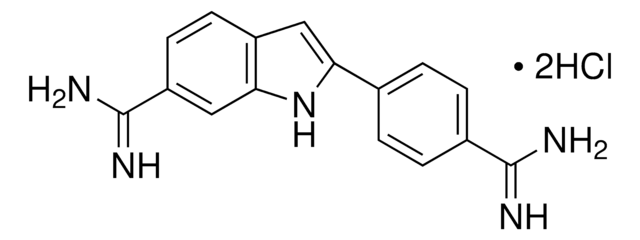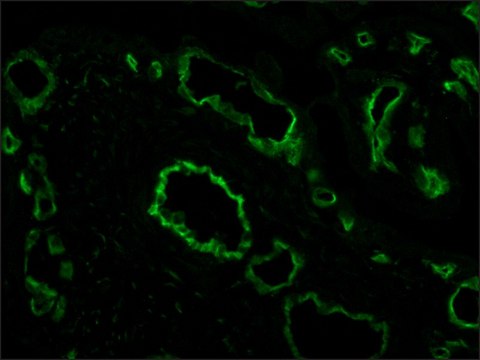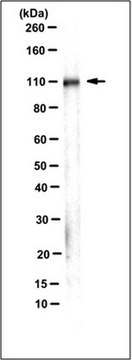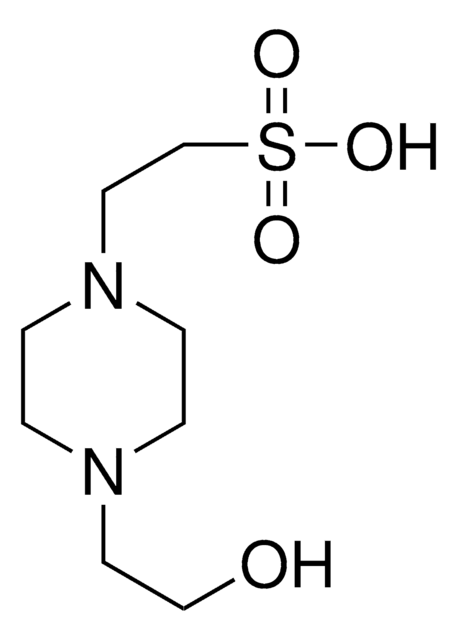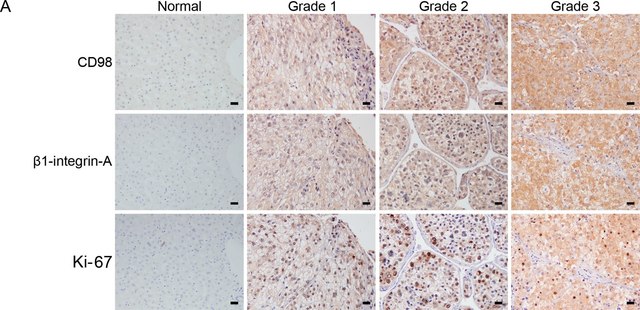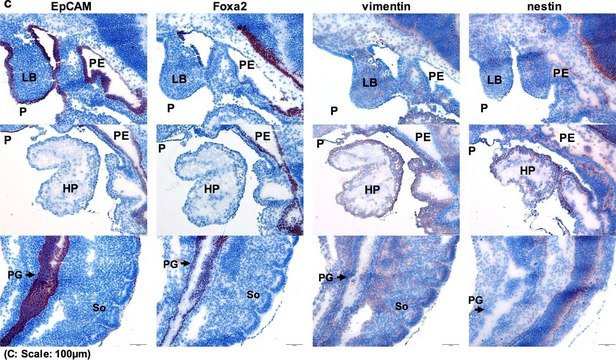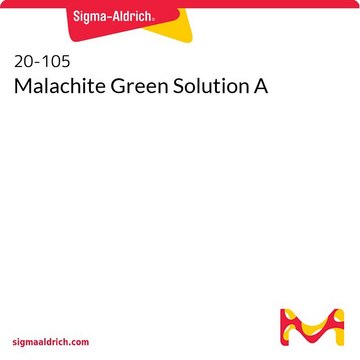MABT27
Anti-LIBS2 epitope (Integrin beta3 subunit) Antibody, clone ab62
clone ab62, from mouse
Synonym(s):
LIBS2 domain, Integrin, Integrin alphaVbeta3, LIBS2 epitiope
About This Item
Recommended Products
biological source
mouse
Quality Level
antibody form
purified immunoglobulin
antibody product type
primary antibodies
clone
ab62, monoclonal
species reactivity
human
technique(s)
flow cytometry: suitable
western blot: suitable
isotype
IgG2aκ
shipped in
wet ice
target post-translational modification
unmodified
Gene Information
human ... ITGB3(3690)
General description
Clone Ab62 is a monoclonal antibody that specifically recognizes the LIBS2 epitope in the C-terminal region of the extracellular domain of the beta3 subunit (Wiberzbicka-Patynowski, I., et al. (1999). JBC. 274(53):37809-37814).
Specificity
Immunogen
Application
Cell Structure
Integrins
Quality
Western Blot Analysis: 0.5 µg/mL of this antibody detected LIBS2 domain of integrin beta3 subunit in 10 µg of human platelets cell lysate.
Target description
Other MW bands may vary or may be observed depending on lysate used and if the LIBS2 epitope is present in other proteins.
Physical form
Storage and Stability
Analysis Note
Human platelets cell lysate
Other Notes
Disclaimer
Not finding the right product?
Try our Product Selector Tool.
Storage Class Code
12 - Non Combustible Liquids
WGK
WGK 1
Flash Point(F)
Not applicable
Flash Point(C)
Not applicable
Certificates of Analysis (COA)
Search for Certificates of Analysis (COA) by entering the products Lot/Batch Number. Lot and Batch Numbers can be found on a product’s label following the words ‘Lot’ or ‘Batch’.
Already Own This Product?
Find documentation for the products that you have recently purchased in the Document Library.
Our team of scientists has experience in all areas of research including Life Science, Material Science, Chemical Synthesis, Chromatography, Analytical and many others.
Contact Technical Service

